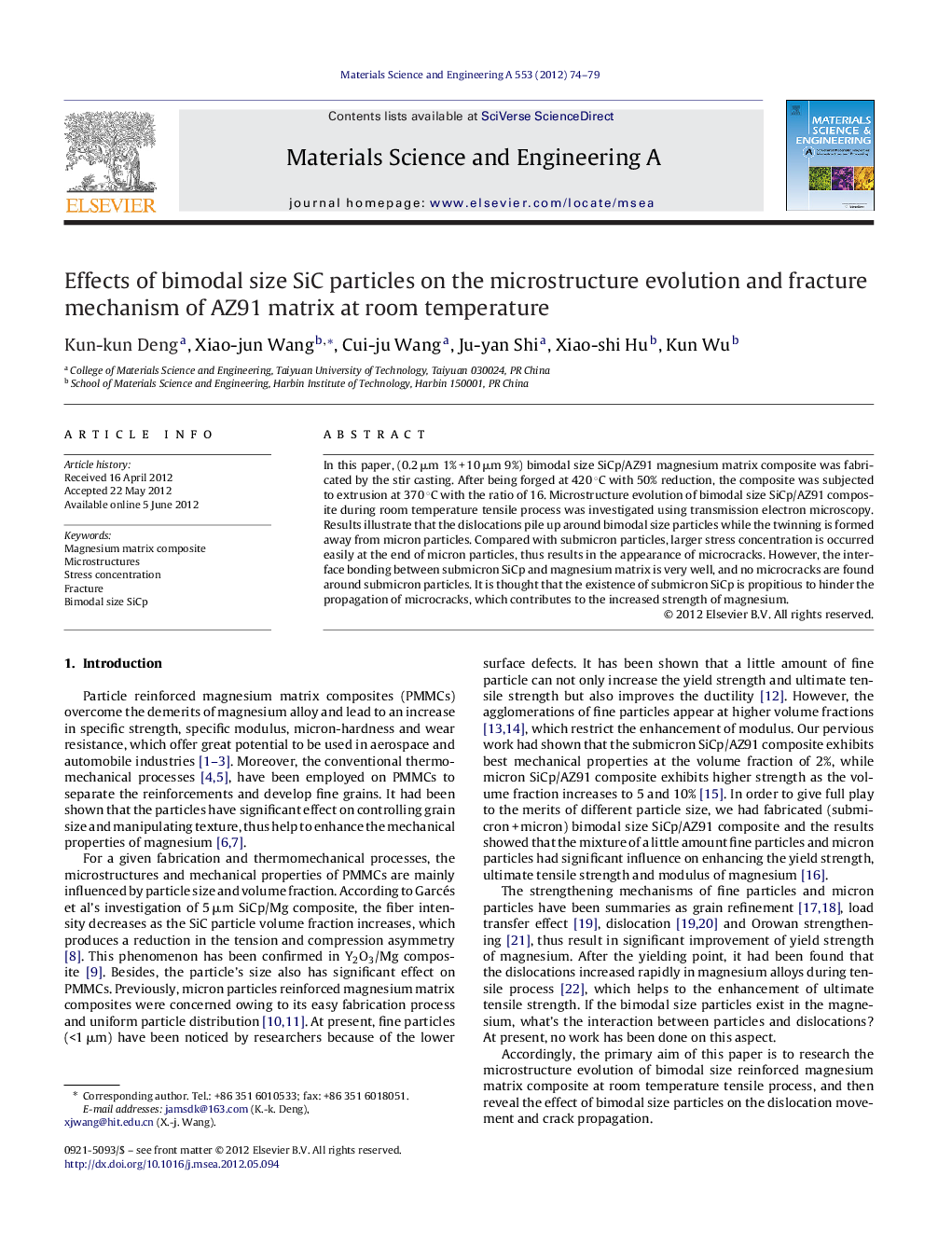| Article ID | Journal | Published Year | Pages | File Type |
|---|---|---|---|---|
| 1576889 | Materials Science and Engineering: A | 2012 | 6 Pages |
In this paper, (0.2 μm 1% + 10 μm 9%) bimodal size SiCp/AZ91 magnesium matrix composite was fabricated by the stir casting. After being forged at 420 °C with 50% reduction, the composite was subjected to extrusion at 370 °C with the ratio of 16. Microstructure evolution of bimodal size SiCp/AZ91 composite during room temperature tensile process was investigated using transmission electron microscopy. Results illustrate that the dislocations pile up around bimodal size particles while the twinning is formed away from micron particles. Compared with submicron particles, larger stress concentration is occurred easily at the end of micron particles, thus results in the appearance of microcracks. However, the interface bonding between submicron SiCp and magnesium matrix is very well, and no microcracks are found around submicron particles. It is thought that the existence of submicron SiCp is propitious to hinder the propagation of microcracks, which contributes to the increased strength of magnesium.
► Effect of bimodal size SiCp on AZ91 over yielding point is analyzed by TEM. ► Lager stress concentration is occurred easily at micron SiCp. ► Submicron SiCp is propitious to hinder the propagation of microcracks. ► Microcracks propagate along micron SiCp.
